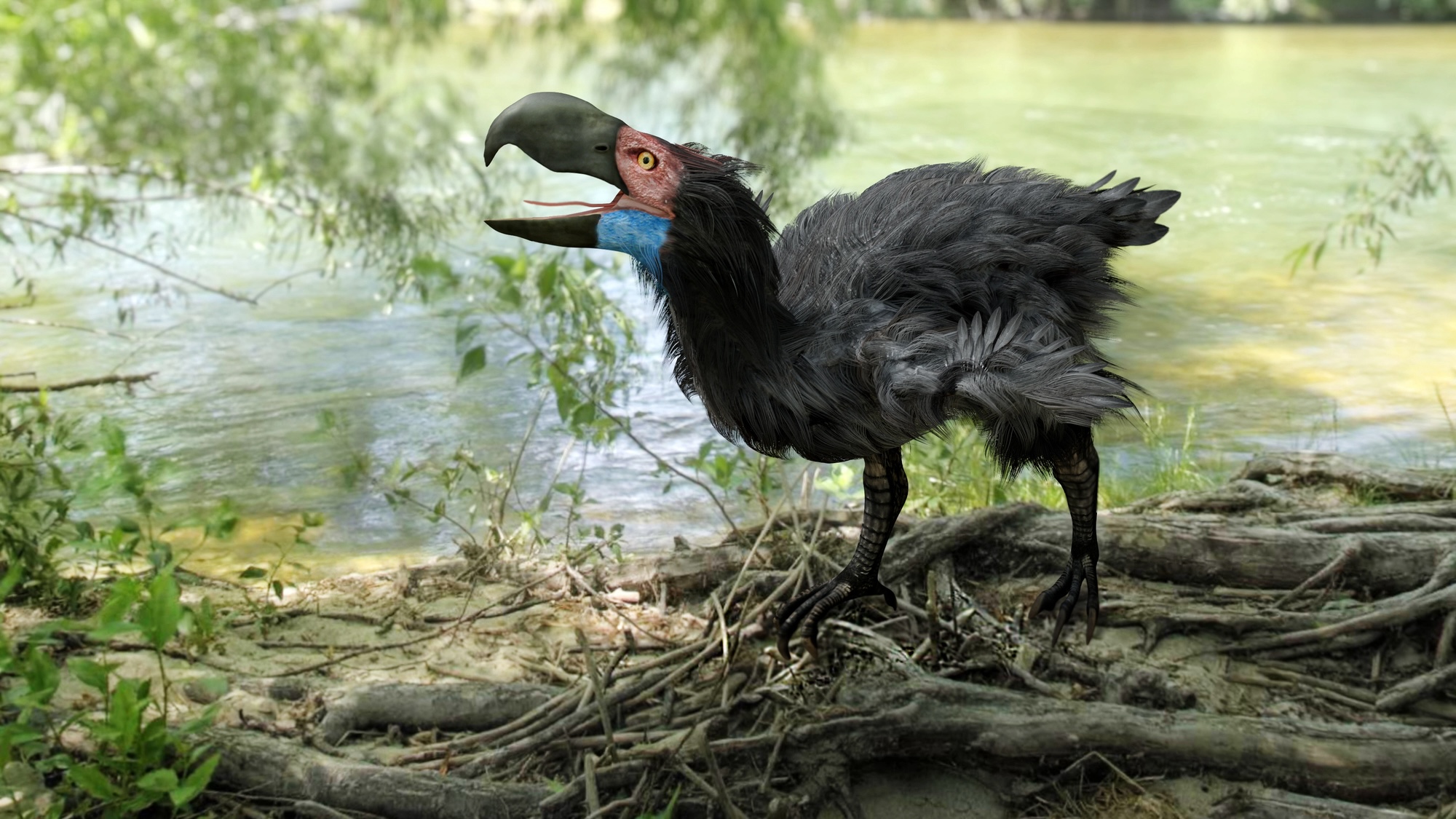Millions of years ago, apex predators in the Phorusrhacidae family lived up to their more common name—terror birds. The mostly flightless, meat-eating dinosaur descendents were the size of dogs at their smallest, but the largest known examples reached nearly 10 feet in height. Now, however, paleontologists have confirmed that a possibly unknown species of terror bird grew up to 20 percent bigger than any previously known, per a recently analyzed fossil. But a pair of teeth marks on the bone indicate even apex predators may have occasionally encountered competition.
Terror birds are known to have lived between the Middle Eocene and Late Pleistocene about 43-0.1 million years ago. At least 20 species comprised the Phorusrhacidae family, some of which are estimated to have weighed as much as 770 lbs. Despite their height and weight, terror bird anatomy and beak structure suggests the animal evolved to largely outrun and eat smaller, rabbit-sized prey. A recently analyzed fossil, however, provides new insight into the predators and their lives.
A study published on November 4th in the journal Paleontology shows just how much information can be obtained from a single bone fragment. Although recovered almost 20 years ago in Colombia’s Tatacoa Desert, experts only confirmed it belonged to a terror bird in 2023 after reexamining the left tibiotarsus—the bird’s lower leg bone similar to a human tibia or shin. In this case, the team also utilized a portable scanner from Johns Hopkins University to generate a three-dimensional model of the roughly 12-million-year-old fossil. In doing so, paleontologists extrapolated the Miocene epoch animal’s likely size as somewhere between 5-20 percent larger than any known species member.
Despite its gigantic stature, this specific terror bird may have ultimately met its match in a Purussaurus—an extinct South American caiman believed to reach lengths upwards of 42 feet. The study’s authors think indentations on the terror bird fossil correspond to the huge crocodilian ancestor, and were possibly received during a matchup between the two ancient predators. Either that, or an already deceased terror bird provided a snack for a scavenging Purussaurus.
The region where local fossil hunters found the tibiotarsus also offers important new information about where terror birds lived for millions of years. Speaking with The New York Times on Monday, paper co-author and Johns Hopkins University paleontologist Siobhan Cooke explained that the bone “confirms that terror birds were part of the faunal community at La Venta [Colombia] for some time, not something transient.”
[Related: Giant 500-pound geese once honked around the Australian outback.]
The predators didn’t only remain in the South American region, either. About five million years ago, the emergence of a traversable Isthmus of Panama allowed the diverse animal species of the once-isolated island to migrate and interact with those living in present-day North America during what is known as the Great American Biotic Interchange. Cooke cited similar terror bird remains found as far north as Texas and Florida indicate they “weren’t [just] birds from Patagonia that decided to walk north 5,000 miles.”
Despite a few more millions of years at the top of their food chain, terror bird populations began to dwindle, likely due to increased competition from canines and big cats. But while the original terror birds are long gone, their smaller descendents are still formidable—today’s Brazilian farmers often use their closest living relatives, the red-legged seriema, as guard animals against livestock predators and burglars.

